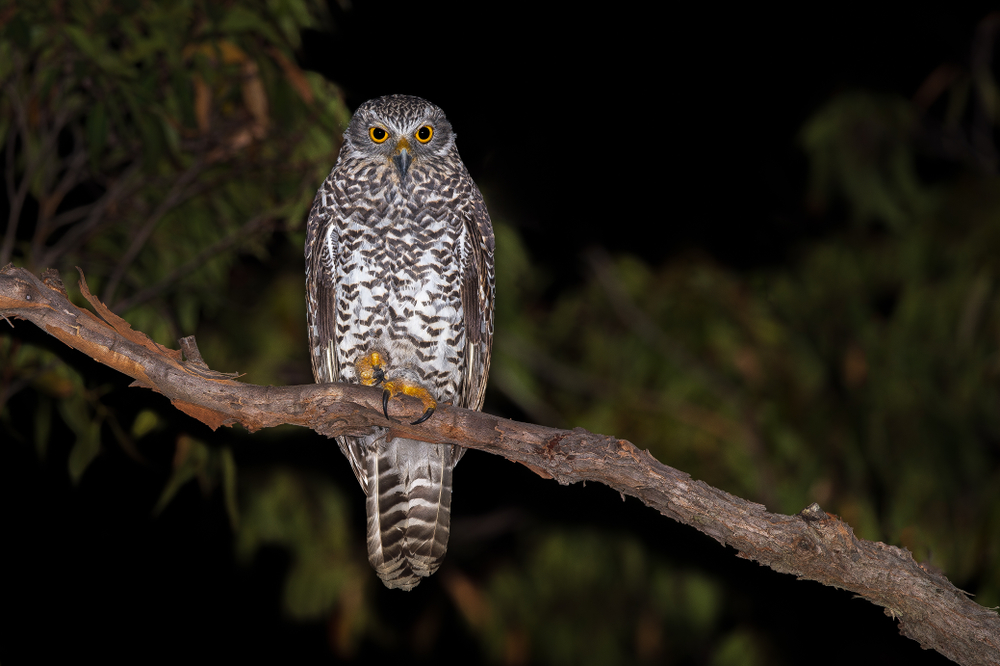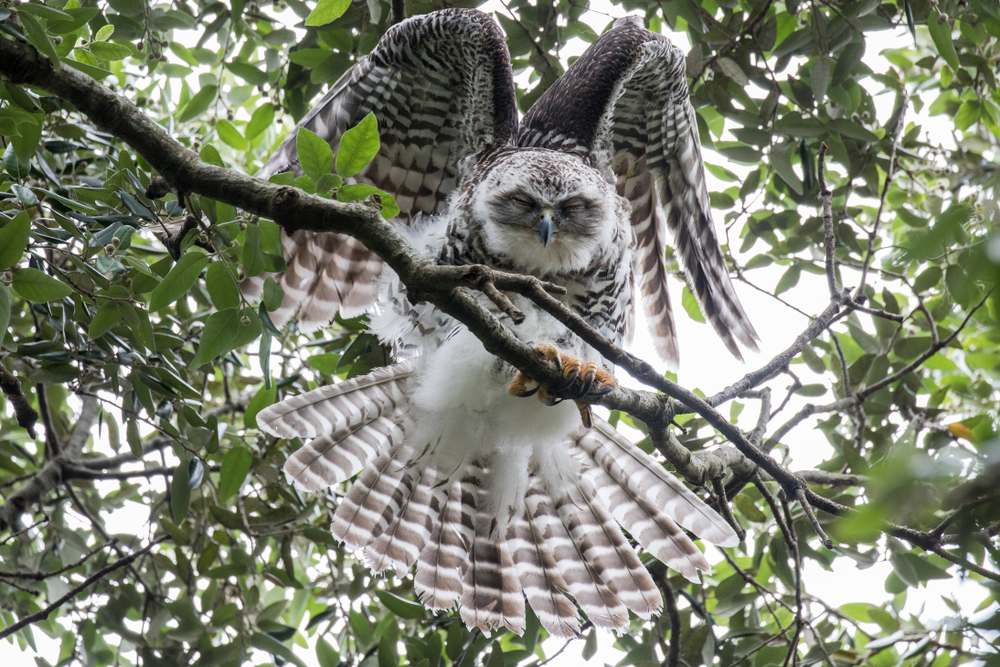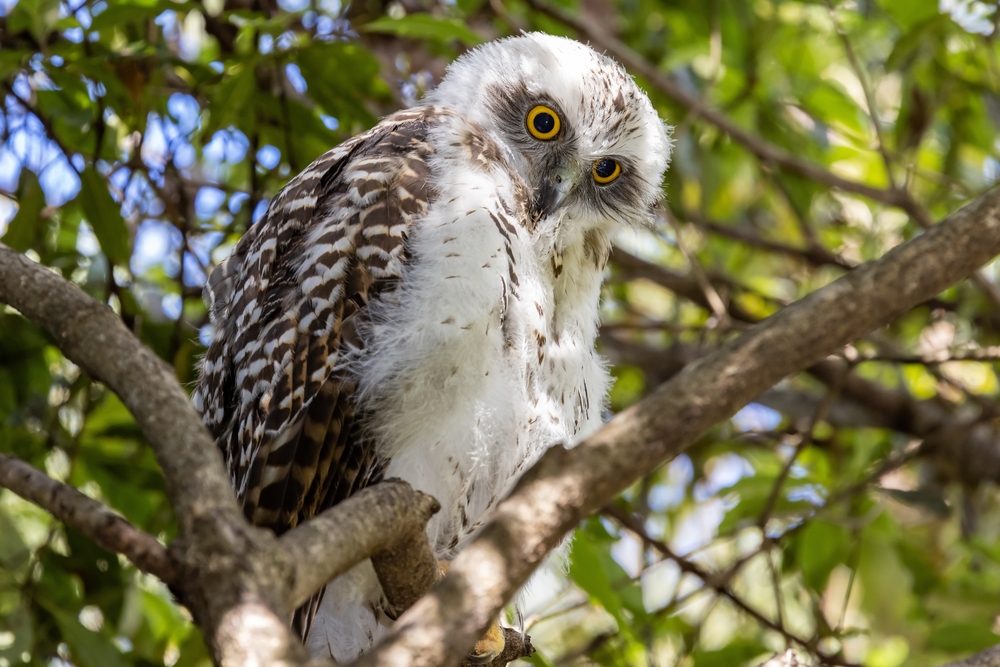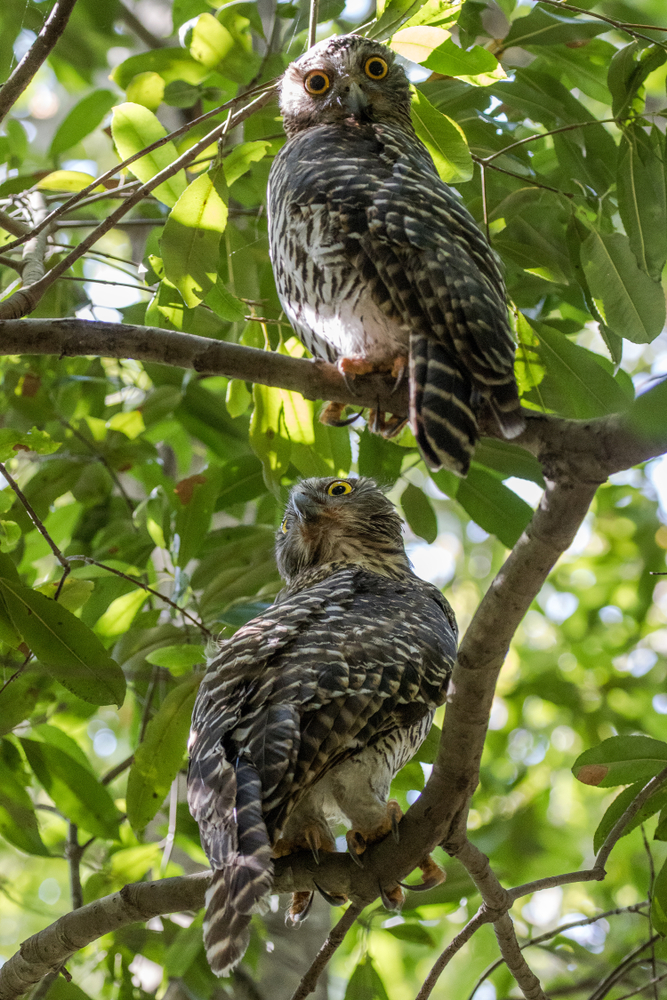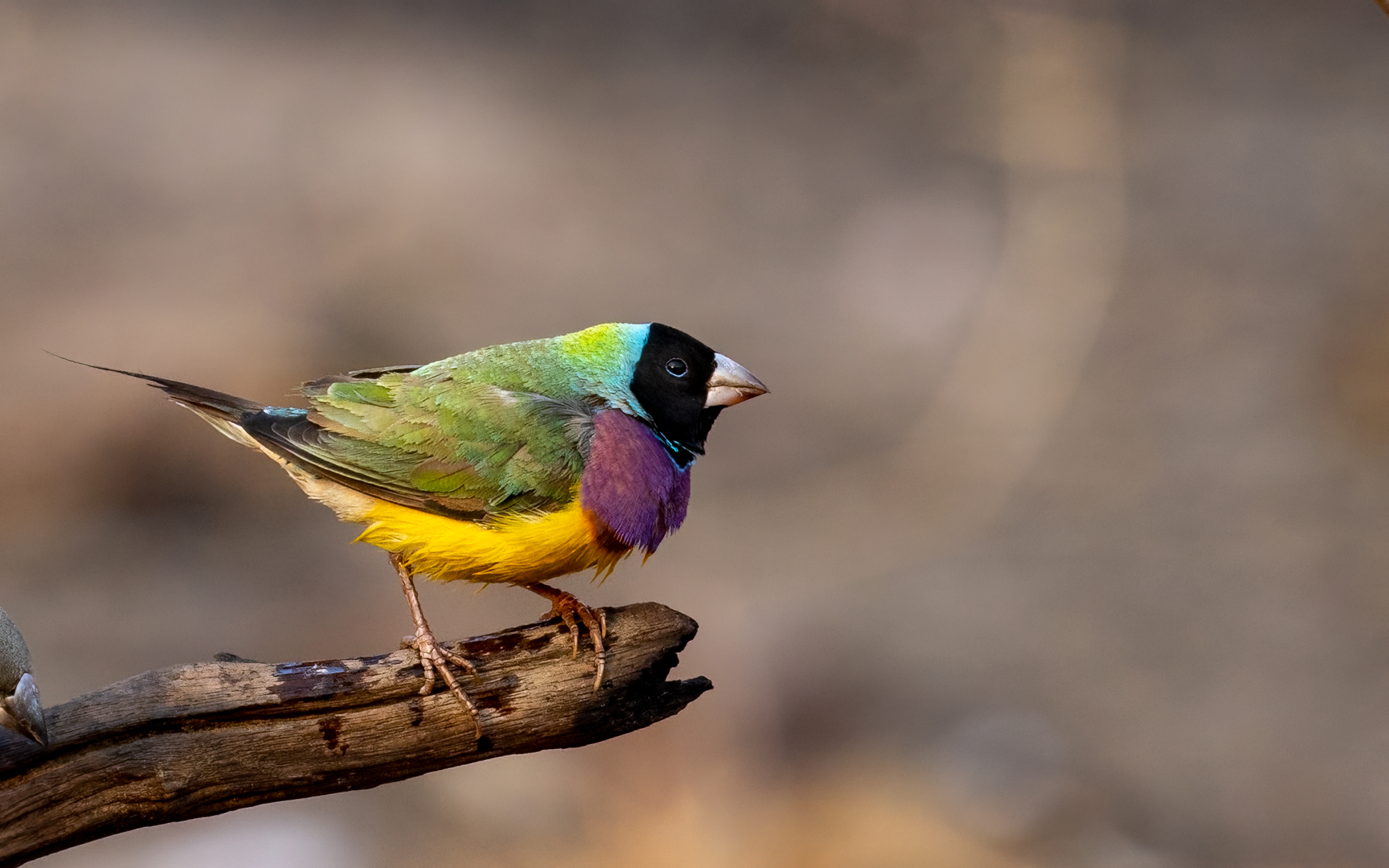| Common name | Powerful owl |
| Scientific name | Ninox strenua |
| Type | Bird |
| Diet | Carnivore |
| Average lifespan | Up to 25 years in the wild |
| Size | 50 – 60cm in length, wingspan of 140cm and weigh up to 1.45kg |
One of the great hunters of the sky, the powerful owl is Australia’s largest owl species. This nocturnal bird has captured the attention of nature lovers world-wide, thanks to its commanding presence in the air and effortless hunting style. Flying silently through the treetops, the bird uses its finely attuned vision to locate unsuspecting prey and its sharp talons and beak to capture its next meal.
Sometimes referred to as the power boobook, the powerful owl has large yellow eyes and no facial disc. Covered in dark greyish brown feathers with distinct off-white markings on top, underneath the powerful owl is white with dark greyish brown V-shaped markings. With feathered legs, the owl’s feet are yellow with black talons that are incredibly strong and capable of holding large prey.

The powerful owl is closely related to the barking owl (Ninox connivens) which is smaller and has vertical streaks across its front. The southern boobook (Ninox novaeseelandiae) is another close bird cousin, with all three identified as ‘hawk owls’ or owls that don’t have the typical facial disk of ‘barn owls.’
The powerful owl is found in eastern and south-eastern Australia. Making its home mainly on the eastern side of the Great Dividing Range, from south-eastern Queensland to Victoria, the powerful owl inhabits a range of vegetations from sclerophyll and woodland forest to tall open wet forest and rainforest. This large bird needs old growth trees within its habitat to nest in.
When it comes to mealtime, the powerful owl is a top predator and prefers to hunt in both open and closed sclerophyll forest or woodland. Medium-sized tree-dwelling marsupials are the preferred source of food, with the greater glider, common ringtail possum and sugar glider topping the list. The powerful owl also eats other roosting birds, which make up between 10–50 per cent of their diet, depending on the accessibility of other mammals. Preferring to forage within the treetops, the powerful owl will also swoop down and use its talons to grab unsuspecting small mammals such as rabbits, on the ground.
The haunting cry of the powerful owl is unmistakable and can be heard throughout the year. More vocal during the autumn breeding period, the owl has a slow, deep double hoot with the female’s call differing slightly with a higher pitch and upward inflection on the second note.
Loyal and committed, the powerful owl mates for life and in some cases, owl pairs stay together for upwards of 20 years. Working as a team, the powerful owl couple defends their all-purpose territory which can reach between 400ha and 4000 ha depending on the number of tree hollows and available prey within their range.
Nesting for the powerful owl takes place between late autumn and mid-winter, but earlier in north-eastern NSW. It is the male’s job to prepare the nest in a vertical hollow in a large old-growth tree, then maintain a steady supply of food for the female during early nesting. The female incubates a clutch of usually two dull white eggs for around 38 days. She then broods the young, eventually leaving the nest to help search for food before the young birds finally leave the parent’s territory some months or even up to a year later.


